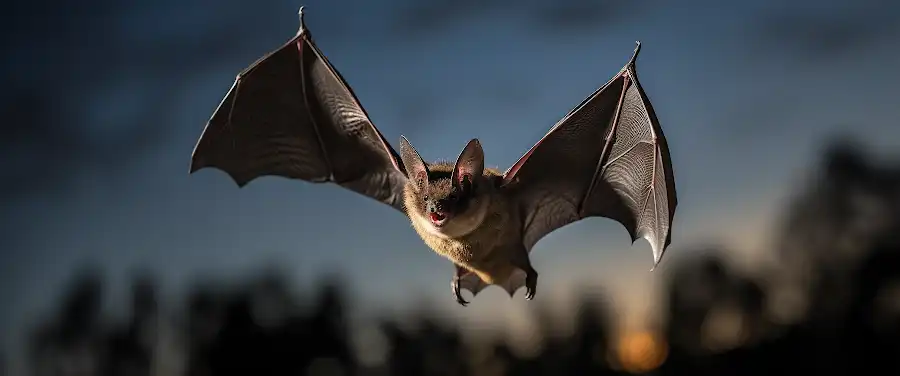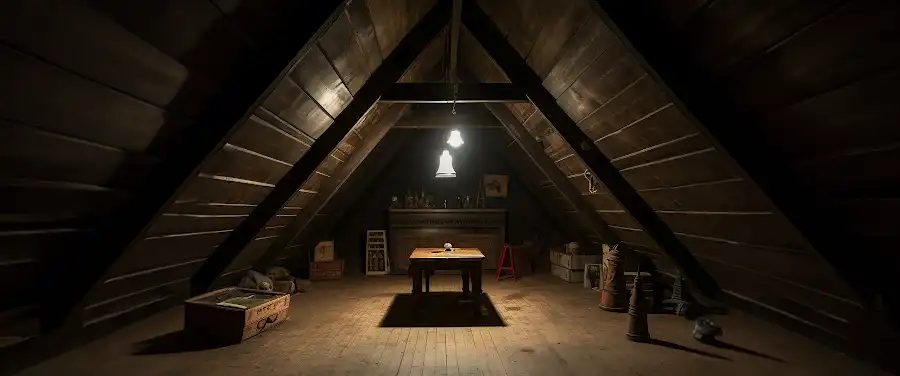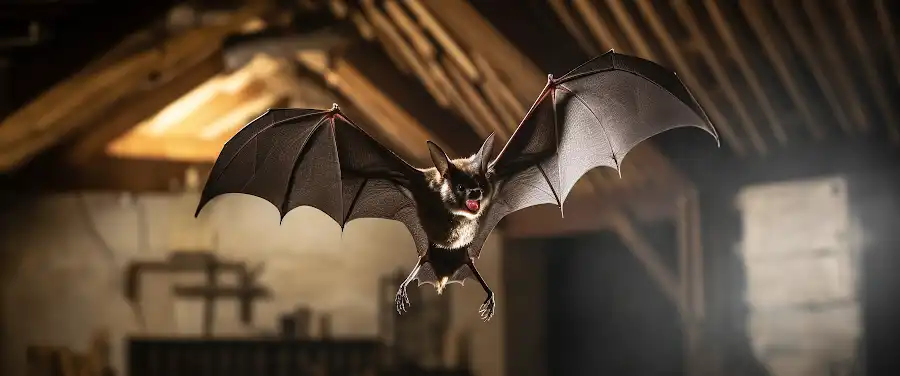
Picture this: you’re sitting by the fireplace, enjoying a quiet evening at home. Suddenly, a screechy noise echoes down the chimney, rattling your nerves and disturbing the tranquility. As you look up, a flurry of black beats swoops down, throwing the room into phased frenzy – bats! Now, this may sound like something from a horror movie, but bats infiltrating attics and chimneys is far more common than you’d think. And trust us, it’s a situation no homeowner ever wants to be in.
You see, bats, though essential for a balanced ecosystem with their insect-eating ways and pollination roles, can turn into a real fright-night when they set up shop in your attic or chimney. They bring along a slew of issues. We’re talking potential health risks from bat droppings (also known as guano), property damage, and let’s not even get started on the incessant noise. To top it off, these nocturnal winged creatures can turn your home, your sanctuary, into their personal playground. That’s why it’s absolutely crucial to bat-proof your home – specifically your attics and chimneys.
Before you start inquiring if garlic or vampire-repellant would do the trick, let’s clear one thing up: Bat-proofing doesn’t involve any Bram Stoker-esque myths. It’s a simple, doable process that we’re about to break down. Ready to protect your place from a bat infestation? Well then, stick around as we dive into the ins and outs of keeping your attics and chimneys bat-free. Plus, we’ll uncover just what makes these areas of our homes so tantalizing to bats in the first place. Let’s buckle up and navigate this journey together. No bat caves allowed here!
What are the Risks of Having Bats in Your Attic and Chimney?

Ever heard the fluttering noise in the dead of the night or suspicious squeaking emanating from your attic or chimney? Well, my folks, it very well could be the haunting presence of bats. Yes, you heard it right. Bats! While they are undeniably fascinating creatures that enhance our ecosystem, bats in your home can pose serious issues.
Bats in the living premises can transmit diseases like rabies and histoplasmosis, an infection caused by breathing in spores of a fungus often found in bat guano. These health risks associated with bats aren’t something any homeowner would rejoice. Saliently, the bulk of bats’ negative impact is on buildings. Structural bat-related damage from their droppings or their scratching and clawing to gain entry can be severe.
Moreover, let’s just say bats aren’t the most well-mannered house guests. From noise disruptions to unpleasant odors, bat infestations render a significant amount of bat disruptions that can turn your peaceful living into a never-ending nightmare.
Here’s a twist though. Despite the troubles they cause, it’s important to remember that bats are a valuable part of our ecosystem and are legally protected in many regions, highlighting the need for safe and ethical bat conservation measures.
How to Identify a Bat Infestation?
Identifying a bat infestation is the first step towards eliminating these winged intruders. Focusing on the signs of infestation would provide clues. You might notice bat guano (droppings), typically found where bats roost, like attics or chimneys. Bats might also leave streaks and oily marks near entrance points.
For detecting them during their active hours, dusk and dawn are the best times to look out for their flight pattern. You might also hear their tiny squeaking sounds or the rustle of their wings. If these signs aren’t apparent, you could consider soliciting the help of a professional pest control service or using bat detectors—tools that pick up ultrasound generated by bats.
How to protect your attic and chimney from bats has now become a necessary knowledge to possess. Bats can be tricky to deal with due to their protective status and the health risks they pose. Hence, strictly following ethical and approved methods while dealing with them is crucial.
As we move on to the next section, we will uncover a step-by-step guide to bat-proof your attic. Ensure to follow these tips meticulously to keep your home bat-free.
How to Bat-Proof Your Attic

Let’s face it, nobody wants these winged creatures taking up residence in their homes, turning your cozy attic into Their nightly roost. To fend off these uninvited guests, here’s how to bat-proof your attic. You’ll need to ensure your attic doesn’t provide the perfect bat habitat, but also keep it comfy for you.
First, clean out the attic thoroughly. Use gloves and face protection while cleaning as bat droppings may contain harmful bacteria. Next, use a high-powered flashlight to identify any crevices or potential entry points. Gaps and cracks are seemingly invisible invitations for our squeaky pests.
Bats prefer darkness and high temperatures to roost, so keeping your attic well-lit and properly ventilated can make it less appealing. Installing lights that stay on continuously or using ultrasonic sound devices could also be effective.
Practical Tips for Sealing Your Attic
- Seal all the gaps: Use a construction-grade sealant to close all the cracks and gaps. Replace broken or missing roofing tiles to limit access points.
- Install door sweeps: Sealing external doors with door sweeps helps prevent bats and other pests from entering.
- Screen vents: Install screens on all vents, windows, and chimney tops with a one-way exclusion device.
Now that you’re up to speed on bat-proofing your attic, let’s glide smoothly over to the next area of defense – your chimney. Your silent night could be interrupted with the flapping of bat wings over your fireplace. Time to learn about bat-proofing your chimney
How to Bat-Proof Your Chimney?

While bats are certainly interesting creatures and play a vital role in our ecosystem, finding them in our homes can be quite an unpleasant surprise. Chimneys, with their dark and secluded spaces, often prove to be a favorite roosting spot for these winged creatures. But worry no more! In this guide, we will talk about the typical bat entry points in chimneys and go through the steps for sealing your chimney against bats. We will also introduce you to various chimney-specific bat exclusion products to help you keep those critters at bay.
Bats primarily gain entry to your home through tiny spaces – open windows, crevices, cracks in the mortar, and, of course, the chimney. Something as simple as an ill-fitted chimney cap can provide bats enough room to squeeze in. Moreover, according to Bat Conservation International, about 5% of bats make chimneys their homes.
To prevent this, chimney sealing is your best line of defense. Start with a thorough inspection of your chimney, paying special attention to potential entry points. Use a sturdy and properly sized chimney cap to prevent bats from getting in. In addition, consider installing a chimney balloon or architecturally appealing metal screens to block any tiny entrance points bats could use.
There are also myriad chimney-specific bat exclusion products available in the market. Bat cones and nettings, for instance, are a favorite among homeowners. They allow bats to leave the chimney but prevent them from re-entry.
Bat-Proofing Materials for Your Chimney
Let’s now talk about the materials used for bat-proofing chimneys. Understanding the pros and cons of different bat-proofing materials for chimneys will help you make an informed choice while ensuring the safety of both your family and the bats.
Among the most commonly used materials are metal screens, mesh netting, chimney balloons, and chimney caps. Metal screens are durable, but they must be appropriately sized to not restrict the chimney’s draft. Mesh netting, on the other hand, can efficiently prevent bat access but may degrade over time. Chimney balloons offer an effective and budget-friendly solution, but they might require frequent inspections for maintenance.
Now, if you’re wondering where to buy these bat-proofing options, worry not. They’re widely available at various brick-and-mortar stores and e-commerce platforms. Site’s like Amazon and Home Depot provide a range of chimney-specific materials designed for dealing with bats.
Keep your home free from unwelcome guests by investing in materials and practices that deter bats from making their homes in your chimneys. Remember, prevention is always better than cure. Up next, we’re going to explore “Best Practices for Bat Exclusion.” So stay tuned to make your home a bat-free zone.
Conclusion
In wrapping up this guide, let’s circle back to the critical significance of bat-proofing your home, specifically your attics and chimneys. We have established that while bats play a crucial role in our ecosystem by controlling insect population, their habitation in our homes can bring about a slew of problems.
Healthwise, diseases like rabies, histoplasmosis pose potential risks. Structurally, their droppings or guano can mess up your home’s infrastructure. Therefore, undertaking sensible and responsible bat exclusion practices becomes more than just an option—it’s a must for every homeowner.
Remember, the goal is not to hurt these friendly night-flyers but to protect your homes while ensuring bat populations remain unharmed. If you suspect or detect any bat infestation, seek professional help immediately. Do not try to exterminate or remove them without expertise; bats are protected by law and must be excluded in a manner that poses no harm to them.
Apply the tips we have shared today—installing bat-proofing nets or meshes in openings, regularly monitoring and sealing off potential entrances, and maintaining cleanliness of your attic and chimney spaces.
No matter what, always prioritize safety for both your family and these creatures of the night. Together, let’s ensure that our homes remain comfortable for us and the world outside remains conducive for bats.
Now, it is over to you. Secure the health of your family and the well-being of bats. Remember, your home is intrinsically linked to the wider ecosystem. Make your next step count!




